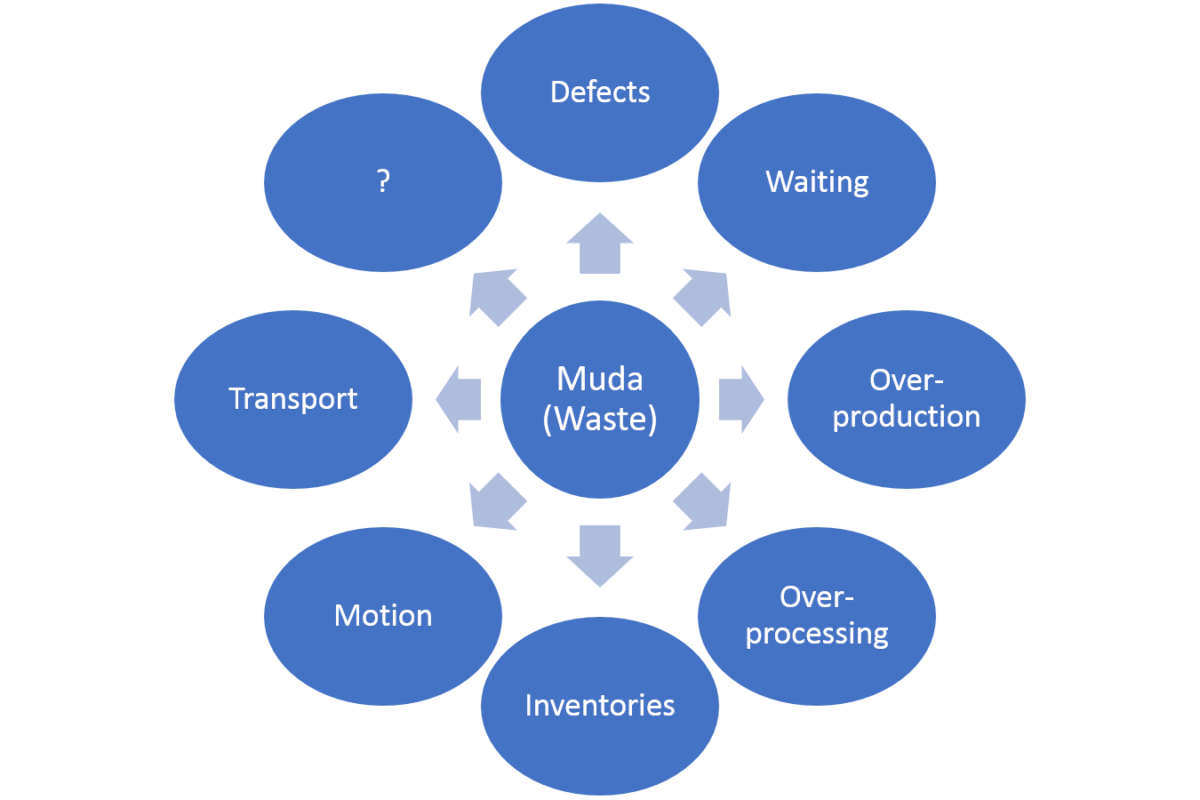Value is one of the fundamental concepts in Lean. When analyzing the process from a customer’s perspective, Lean practitioners separate value-added activities from non-value added ones, which are muda or waste. By relentlessly removing waste, Lean organizations are able to deliver value to their customers fast and at the lowest costs.
Many people are familiar with the seven types of waste originally identified by Taiichi Ohno.
- Defects or rework
- Waiting
- Overproduction
- Overprocessing
- Inventories
- Motion
- Transport
These types of waste are common not only in physical production but also in services and transactional environments. With some experience, one cannot stop but see waste everywhere they work. For example, mistakes happen and require rework (defects). Documents go through multiple reviewers before approval (overprocessing). Searching a number of locations before the information is found (motion).
In my observation, this simple concept and basic awareness of waste is a very effective first step toward building a Lean organization. Who wants to waste their time doing things not valued?
As an organization becomes more mature in Lean thinking, it will discover more types of waste that are less visible and potentially more detrimental. For example, James P. Womack and Daniel T. Jones, in their book Lean Thinking, included “the design of goods and services which do not meet user’s needs” as an additional type of waste.
Personally, I think the worst type of waste is underutilized human potential. Many would agree. It is also the most difficult type to reduce. I see it manifest in three common forms.
- Employees spend a large proportion of their time on non-value added activities. These include attending unproductive meetings, writing lengthy reports that few people read, or preparing elaborate presentations for management when a summary suffices.
- Employees are not able to use their knowledge and skills they are hired for. To quote a senior executive, “The company hires the best people and then ties their hands when they come to work.” Often motivated employees eager to solve a problem only are told “that’s not your job.”
- Employees are not growing to be more productive or effective. They are stuck doing the same job using the same skills for years. Many are not aware of the growth opportunities until late in their careers. Some technical training, coaching, or exposure to leadership concepts, continuous improvement methodologies, or computer skills goes a long way to improve their performance.
As more people move from traditionally manual work to knowledge work, the demand for new knowledge and skills only accelerates. If we do not effectively address the waste of underutilized human potential, the loss will be immeasurable for both individuals and organizations.
Just to understand the problem is an enormous challenge. But I believe there are steps that employees and managers can take to make a significant difference.
For example, for employees
- Take ownership of our career and professional development; no one else has the responsibility.
- Continue to develop ourselves professionally, in technical, business, and leadership skills. This can be achieved through education (e.g. taking classes) and experience (e.g. taking on a challenging project).
- Seek mentorship and feedback from others within our own organization and outside.
For managers,
- Encourage our employees to do the above and support them with our words and actions.
- Be aware of the impact of our actions and decisions on our employees. Are we the root cause of their non-value added activities?
- Have a growth mindset in our employees. Continue to provide them challenging opportunities. Support, mentor, and coach them along the way.
What is the worst type of waste you see? How do you reduce it?
